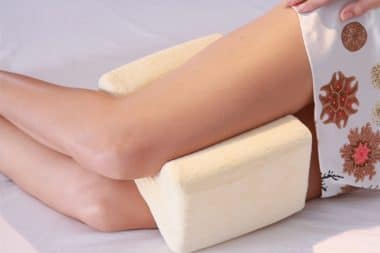It may be that you always assumed, or were misinformed by others, that you should always stretch first before warming up for your home exercise session. This is a common misconception, and perhaps, it is a natural assumption. People think, “During warm up, I’m moving my muscles, so I should stretch them before moving them.” In reality, however, research and experience agree that warming up should always precede stretching.
Why Warm Up First?
There are many reasons to warm up first and then stretch, but the basic point is to raise the temperature of your muscles before stretching and straining them. “Warming up,” then, is to be taken in a very literal sense. Warm muscles move easier and with less risk of injury. Stretching cold muscles is dangerous and counter-productive.
The initial warm up will loosen your muscles to make them more flexible. It will also get your blood flowing and enlarges your blood vessels. This has the effect of bringing extra oxygen into your muscles, which increases their power out-put. And it also helps the most important muscle in your whole body, your heart, by infusing it with plenty of oxygen and reducing heart stress. Finally, warming up first improves your range of motion, slowly raises your heart beat rate, and reduces the chances of getting cramps.
How Long Should I Warm Up?
How long should you warm up before getting to the stretching and exercising? The answer is, “That depends.” For one thing, it depends on how in shape you are. Beginners should warm up for about 10 minutes, while more advanced “workout kings” can afford to cut that down to only five minutes. Even just a two-minute warm up, however, is a lot better than not warming up at all, encouraging you to not skip the warm up phase entirely just because you are short on time.
If you don’t like to measure things strictly by time, but are more “event oriented,” do your warm ups until your body starts to feel noticeably warmer and you can tell your heart rate is slightly above normal.
What Heart Rate Should I Aim At?
Another way to measure your warm ups is to aim for a specific heart rate. This method requires a good deal of careful counting and math, unless of course you have an app for that. Use our target heart rate calculator to find out your target heart rate.
Your full heart rate goal will be reached during the actual exercises, but during warm up, you start out at 40 percent of goal. Continue at 40 percent for a couple minutes, then step it up until you hit 60 percent.
How do you know what rate you are at? Hold your index and middle finger together on your neck where you can feel your pulse. Looking at a stop watch, count the number of pulse beats you feel before the watch times up to 6 seconds. Let’s say that you felt 8 beats. Multiply 8 by 10 to find out how many beats there would have been in 60 seconds, a full minute. It would be 80, which is 40 percent of 200, the full target rate for a 26-year-old female. Expect to breathe a little hard by warm up’s end, but do not over-exert yourself. It is counter-productive.
Which Warm Up Methods Can I Use?
Walking fast or jogging slow, which basically meet in the middle as the same thing, are the two most commonly stated warm up methods. However, it doesn’t have to be walking or jogging, for there are other ways to warm up as well. Any aerobic activity will do. For example, you may wish to ride your bicycle, ride a stationery exercise bike, run on a tread mill, jump rope, do jumping jacks, or play tennis.
Which Stretching Methods Should I Follow?
After you are all warmed up, you should do what are called “dynamic” stretches. This means you use move slowly and methodically. You do not hold the stretch but neither do you rush it. You might choose to include wall stretches, toe touches, arm circles, hip rotations, or “power walking.” Which stretches are best varies according to what your main exercise or sports activity is going to be. Also try to cover various parts of your body so you stretch everything rather than just one area. Finally, get help from experts in understanding the proper techniques for each stretch. It can actually be harmful to do stretches with the wrong technique.
Three specific “dynamic” stretches that work well for almost any exercise routine are given below as examples:
- The “Goose Step:” This is a slow march where you lift your legs, on at a time, straight up into the air right in front on you. You walk along in this manner at your usual stride. It may look funny, and you may have to dissociate it in your mind from those World War II pictures you saw in that documentary a while back, but it is an effective way to stretch out your hamstring muscles.
- Knee Lifts: While walking or jogging along, lift your knees as far as you can toward your chest. You can also add in “spinal twists” by moving your upraised leg in toward your body and your body toward it at the same time.
- “Butt kicks:” In this stretch, you bend your knee and move it behind you as if to kick yourself in the butt. This is all done while walking, and it stretches the quadriceps quite well. Again, it looks a little odd to onlookers, but it works.
What Should I Do After I Exercise?
After your exercise session is over, you should do more stretching. This time, however, it should be “static stretches.” This means holding stretches for a long time, up to 30 seconds straight. Many people do static stretches before they exercise but do none at all afterwards, but that is a mistake. Dynamic stretches are best before and static ones after. Post-workout stretching helps you lengthen your muscles and boost their future flexibility. It is like getting a “bonus benefit” out of the workout you just completed.
You can hold static stretches for only 15 seconds at first and work your way up to 30 seconds when you gain more experience. If you feel intense pain, you should stop. You should feel some tightness in the stretched muscle, and you can stretch it a bit more each time. Never over-exert, however. That will only lead to muscle damage and could even result in serious injury. It is good to push yourself, as long as you don’t push too far.
Don’t Stop Abruptly!
After exercising and doing post-exercise stretches, you should take a little time to “cool down.” Walk slowly, outside or on a treadmill, for about 10 minutes. This will allow your heart rate to gradually, and safely, decline back to normal. It will also let your blood flow and remove lactic acid from your body, which has a negative effect if left in your system.
The cool down helps you recover after the intensity of the exercise. Abruptly stopping and immediately going off to do other things is bad for your body. It needs time to relax and recover.
A Word About Fitness and Lifestyle
It is not advisable to exercise more than every other day or three to four times a week. Exercise and stretching literally tears up your muscles and wears you down. It uses up your energy and leaves you feeling depleted. As long as you don’t over-do it, it is a good thing. It will help you stay in shape, lose weight, and feel more energetic. But if you don’t give yourself time to rest and recover, exercise can actually have negative effects.
Also make sure that exercising is part of an overall healthy lifestyle. This should include eating healthy foods, getting plenty of sleep, and staying generally active. If you lead an unhealthy, sedentary lifestyle and then just jump up an intensely exercise now and then, it could lead to injury. It won’t give you the desired results either. Make your exercise program a part of an overall health and wellness plan, however, and you will see things improve.
Conclusion
Many people who exercise don’t do it in the correct order, even when they include all of the right elements. It is best to warm up first, then do “dynamic” stretches, then do intense exercise, then do “static” stretches, and then cool down. It is also important to follow proper techniques, to avoid over-exertion, and to make your exercise program a part of an overall healthy lifestyle.







